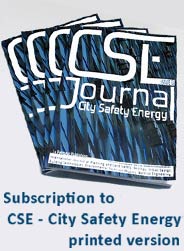Industrial paper recycling process: suitable micronization for additive polymer application
Abstract
The traditional paper recycling process has problems related to the disposal of sludge and waste, the use of incinerators and water treatment. Because of that, an interesting alternative proposed from dep. of chemical and materials engineering of Sapienza University of Rome to Carlucci industrial typography, is using paper as filler in thermoplastics or recycled thermoplastic matrix composite. In this way it’s possible re-use paper, but it also possible reduces the amount of polymer with equal volume. The paper has to be subjected by grinding. The chosen grinding process is fundamental to obtain a suitable product for composite. After a pre-grinding process obtaining 5-10 mm of paper fragments, the charge have to be subjected to a micronization process. In this study are selected two different type of micronization: the superfine grinding mill SF, a micronization process based on system that uses simultaneously the impact and friction action, and a knife mill that uses instead the cutting and friction action. Thanks to the first process, it is possible obtaining fibres with diameters of about 15-20 microns and lengths of the order of 250-500micron: a product therefore suitable for the application of filler in composites. This process unfortunately causes the production of fluff, as will shown in figure 2, because of the interfibrillar bonds between the fibers: an optimal dispersion of the fibers is necessary to avoid agglomerates which would decrease the composite properties. From the second process it is possible to obtain both fiber than particles as illustrated in figure 3. This morphologies mix allows to achieve a higher fluency preventing agglomerates. The turbomixer equipment realizes the production process of the composite, this process allows to introduce a higher percentage of filler respect the traditional injection moulding technique. The resulting composite is subjected by a morphological and mechanical characterization: look at the SEM analysis of the fracture surface, the fiber-matrix interface is weak, in spite of this, however, from the tensile test there is a constant elastic modulus and in some cases growing respect to the matrix devoid of fibres. From these results, the importance of optimize the grinding and micronization processes is clear and there is the opportunity of additives introduction to improve fiber-matrix interface.
Keywords
Read the full text
Download PDFReferences
M. R. Doshi, J. M. Dyer, Encyclopedia of Materials: Science and Technology, Paper: recycling and recycled materials, pp 6711-6720.
L. Gaines, Encyclopedia of Energy, Volume 5, Recycling of paper, pp 253-261.
www.zanettiarturo.com, raccolta differenziata carta e cartone, 24 Settembre 2014.
www.gestione-rifiuti.it/smaltimento-carta-cartone
www.ecoage.it/carta-da-macero
Best Available Techniques (BAT) Reference Document for the Production of Pulp, Paper and Board.
information on www.cimma.it
information on www.retsch.it
M. Valente, J. Tirillò, A. Quitadamo, C. Santulli, “Use of recycled milled-paper in HDPE matrix composites”.
Electronic proceeding of: 5th International Conference on Innovative Natural Fibre Composites for Industrial Applications ISBN 9788890924002
W. Singworth, D.H. Roberts, compatibilizers for recycled products.
M. Valente, F. Sarasini, F. Marra, J. Tirillò, G. Pulci: ”Hybrid recycled glass fiber/wood flour thermoplastic composites: Manufacturing and mechanical characterization.” Composite part A (2011), 649-657.
DOI: http://dx.doi.org/10.12896/cse20150020071
Refbacks
- There are currently no refbacks.

This work is licensed under a Creative Commons Attribution 3.0 License.
CSE Journal - City Safety Energy is a semiannual journal (Two ISSUES per Year) published by Le Penseur in Brienza (PZ) - Italy | ISSN print edition 2283-8767 | ISSN online edition 2284-3418 - Journal registerd at the Court of Potenza (Italy) n. 219/2014


